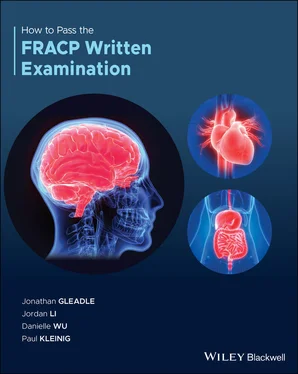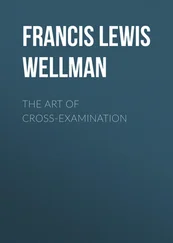7 7. Beta‐blockers are recommended as first line therapy for stable angina. Their main mechanism of action is explained by:Increased coronary artery blood flow.Plaque stabilisation.Reduction in blood pressure.Reduction in myocardial oxygen demand.
8 8. What is the management strategy for a patient with the following ECG?Amiodarone.Beta‐blocker.Implantable cardioverter–defibrillator (ICD).Pacemaker.
9 9. A 54‐year‐old man is admitted to hospital because of syncope. This is his third presentation with syncope due to severe postural hypotension over the past six months. He has developed chronic diarrhoea and lost 6 kg of body weight in the past six months. He has no significant past medical history. On examination, BP is 90/50 mmHg. HR is 86 bpm. There are no murmurs. Urinary analysis shows ++++ protein but no RBCs nor RBC casts. His investigation results are shown below. ECG shows sinus rhythm and low voltage in all leads. Echocardiogram reports moderate left ventricular hypertrophy, biatrial dilatation and grade 2 diastolic dysfunction.TestsResultsNormal valuesHaemoglobin108 g/L135–175White blood cell5.48 x 109/L4.0–11.0Platelet206 x 109/L150–450Sodium133 mmol/L135–145Potassium4.3 mmol/L3.5–5.2Creatinine156 μmol/L60–110Albumin22 g/L34–48Globulin42 g/L21–41Liver function testsnormalTroponin<29 ng/L0–29N‐terminal pro b‐type Natriuretic Peptide (NT‐proBNP)1800 ng/L0–124What would you consider the most appropriate next investigation?Cardiac MRI.Coronary artery angiogram.Holter monitor.Implantable loop recorder.
10 10. Which one of the following increases cardiac output?Atropine.Acidosis.Beta‐blockers.Hypertension.
11 11. A 72‐year‐old woman presents to emergency department after an episode of loss of consciousness. Which of the following clinical features, if present, DO NOT increase the likelihood that her loss of consciousness was due to cardiac syncope?Breathlessness prior to the episode.Cyanosis during the episode.History of atrial fibrillation.Significant injury as a result of loss of consciousness.
12 12. An 80‐year‐old man presents to emergency department with sudden onset of left‐sided weakness two hours ago. His medical history includes hypertension, hypercholesterolaemia, and atrial fibrillation for which he is taking aspirin only. CT head shows acute right middle cerebral artery territory infarction. He is treated with thrombolysis followed by bridging low molecular weight heparin then a direct thrombin inhibitor. Two weeks later while in rehabilitation, he develops low grade fever, myalgia, painful feet (shown below), anaemia, and AKI.The most likely diagnosis is:Acute allergic reaction to direct thrombin inhibitor.Antiphospholipid syndrome.Cholesterol embolisation.Multiple emboli due to inappropriate use of an oral direct thrombin inhibitor.
13 13. Which one of the following patients can be investigated appropriately with a computed tomography coronary angiography (CTCA)?An asymptomatic patient with history of type 2 diabetes and normal renal function.A patient with previous coronary stents presenting with chest pain and possible in‐stent restenosis.A patient presenting with central chest pain and rapid atrial fibrillation.A patient with chest pain but with a low pre‐test probability of coronary artery disease.
14 14. A 75‐year‐old man presents with transient weakness of his left arm. He is diagnosed with a transient ischaemic attack. He is known to have hypertension, type 2 diabetes, alcohol dependence, recent weight loss, and a low‐grade fever. He undergoes a transthoracic echocardiogram which reveals a 12 mm mitral‐valve vegetation.Which one of the following statements is true?Blood culture is negative in over 20% of cases of infectious endocarditis.Cerebral complications are the most frequent extracardiac complications.Majority (80%) of cases of infectious endocarditis develop in patients with known valvular disease.Streptococci in the most common pathogen isolated.
15 15. A 75‐year‐old man presents with increasing dyspnoea. You note that he had four admissions in the past year due to decompensated CCF. He is known to have ischaemic heart disease with a drug eluting stent in two coronary arteries, insulin dependent type 2 diabetes, hypertension, stage 4 CKD with an eGFR of 26 ml/min/1.73 m2 and severe smoking related COPD. His medications include aspirin, clopidogrel, perindopril, gliclazide, frusemide, digoxin, spironolactone, atorvastatin, formoterol/,budesonide inhaler, and tiotropium inhaler. Physical examination findings are consistent with decompensated CCF. His ECG is shown below. A dobutamine stress echocardiogram demonstrates no reversible ischaemic change but a large antero‐apical area of akinesia. The ejection fraction is 30%.The most effective treatment to reduce the frequency of readmissions and improve survival is:Add a SGLT2 inhibitor.Commence a beta‐blocker.Insert a biventricular pacemaker and defibrillator.Insert a dual‐chamber pacemaker.
16 16. Which one of the following medications is recommended in patients with type 2 diabetes with cardiovascular disease and inadequate glycaemic control despite metformin, to reduce the risk of cardiovascular events and hospitalisation for heart failure?Dipeptidyl peptidase‐4 (DPP‐4) inhibitors.Glucagon‐like peptide‐1 (GLP‐1) analogues.Sodium‐glucose co‐transporter‐2 (SGLT2) inhibitors.Thiazolidinediones.
17 17. A 70‐year‐old woman presents with a 2‐month history of exertional dyspnoea for evaluation. Her medical history includes longstanding hypertension, obesity, OSA, and permanent AF. On examination, there are clinical signs consistent with CCF. Her troponin level is normal, but NT‐pro BNP level is elevated. Her echocardiogram demonstrates a left ventricular ejection fraction of 55%, left ventricular end‐diastolic volume index (LVEDI) <97 mL/m2 and the ratio of mitral early diastolic inflow velocity to mitral early annular lengthening velocity (E/e')>15.Which one of the following treatments will reduce mortality for this patient?Angiotensin‐converting enzyme inhibitor.No pharmacological treatment proven to reduce mortality.Phosphodiesterase‐5 inhibitor.Selective sinus node If sodium channel inhibitor.
18 18. In a 28‐year‐old man with known hypertrophic cardiomyopathy (HOCM) who has had one episode of syncope at work, which one of the following treatments should be instituted?Amiodarone.Anticoagulation.Atenolol.Implantable cardioverter–defibrillator.
19 19. A 56‐year‐old man presents to emergency department with severe headaches and blurred vision. He is known to have IgA nephropathy but has no regular follow up for this. His BP is 210/110 mmHg. You have performed a fundoscopic examination which is shown below:What does the fundoscopy show?Keith‐Wagener (KG) grade 3 hypertensive retinopathy.Keith‐Wagener (KG) grade 4 hypertensive retinopathy.Retinal artery occlusion.Retinal vein occlusion.
20 20. Which one of the following patients DOES NOT have an indication for an implantable cardioverter defibrillator (ICD) implantation?A 20‐year‐old man with congenital long QT syndrome with recurrent syncope who cannot tolerate beta‐blockers.A 65‐year‐old woman with haemodynamically unstable ventricular tachycardia not due to reversible causes.A 59‐year‐old man with ischaemic cardiomyopathy with a myocardial infarction two weeks ago with left ventricular ejection fraction of 30%.A 22‐year‐old asymptomatic female with hypertrophic cardiomyopathy, unexplained syncope but no family history of sudden cardiac death.
21 21. A 56‐year‐old man with a background history of type 2 diabetes, hypertension, and hyperlipidaemia presents with unexplained syncope and palpitations that happen around 6‐monthly. His previous cardiac investigations, including repeated 12‐lead ECG and 24‐hour Holter monitoring, are normal.What is the appropriate next step to investigate palpitations?Three‐day Holter monitoring.Seven‐day Holter monitoring.Wearable device.Implantable loop recorder.
Читать дальше












